Headgear
The Aquamen
The Aquamen are part of Machtiern, a French theater company. They wander around in public wearing fishbowl helmets, with live fish swimming around inside the helmets.Details from the Telegraph:
But wearing a fishbowl is not for the faint-hearted, Mr Manini told the Telegraph.
"It's a bit like wearing a reverse diving bell," he said, adding that it took years to perfect to avoid leaks around the neck with each bowl and suit moulded to the individual performer.


Posted By: Alex - Tue Nov 08, 2022 -
Comments (3)
Category: Performance Art, Fish, Headgear
The Hat Gun
Source.See also our recent LIPSTICK-, PURSE- AND SHOE-GUNS.
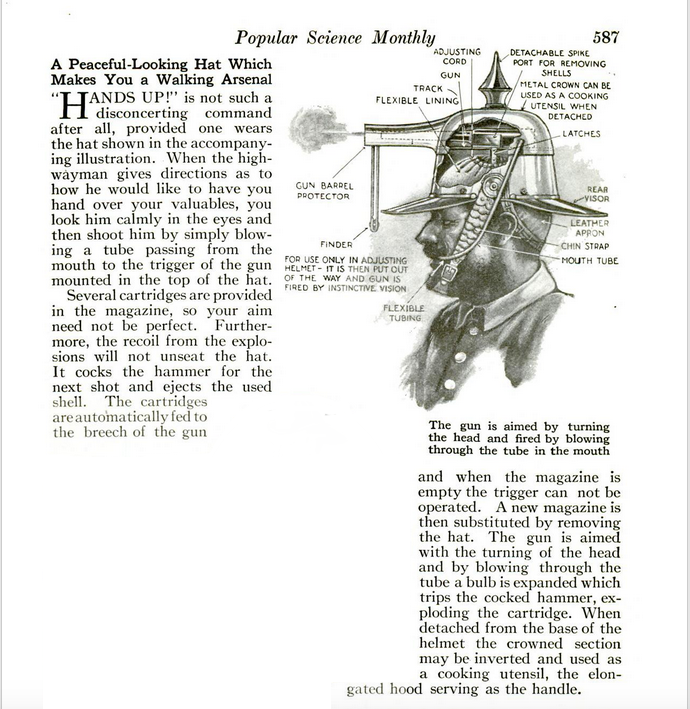
Posted By: Paul - Mon Oct 17, 2022 -
Comments (2)
Category: Headgear, 1910s, Weapons
The Miss Black America Crown
The Miss Black America beauty contest was launched in 1968 to protest the lack of black women in the Miss America pageant. There's nothing weird about that. But what is a bit odd is the crown that was introduced in the second year of the contest. It looks like miniature Christmas ornaments on sticks, or extraterrestrial antennae.There must have been a reason for this unusual crown, but I haven't been able to find any info about it. Perhaps the contest organizers thought it looked more modern and space-age?
It was used for three years and then, in 1972, the contest reverted to a more traditional crown. Again, no explanation given that I can find.

Gloria O. Smith, Miss Black America 1969

Stephanie Clark, Miss Black America 1970

Joyce Warner, Miss Black America 1971
Posted By: Alex - Mon Sep 19, 2022 -
Comments (1)
Category: Awards, Prizes, Competitions and Contests, Headgear
Lightning Rod Hat
AKA "Le chapeau paratonnerre." Details from Amelia Soth on JStor Daily:
image source: wikimedia
A more recent version of a lightning-rod hat:
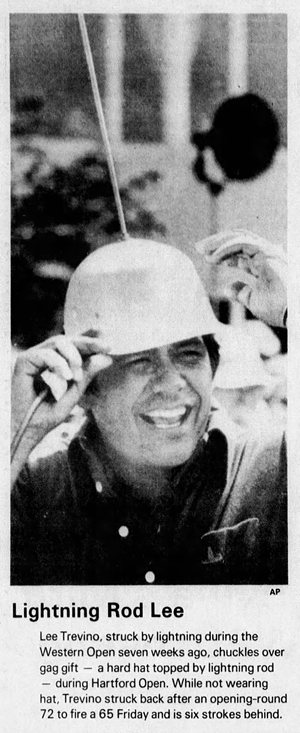
Tampa Bay Times - Aug 16, 1975
Posted By: Alex - Tue Jun 21, 2022 -
Comments (0)
Category: Headgear, Weather, Eighteenth Century
Las Floristas Headdress Ball
It seems that this charity group does not do the annual Headdress Ball any longer. But we can still marvel at the past.See more photos here.
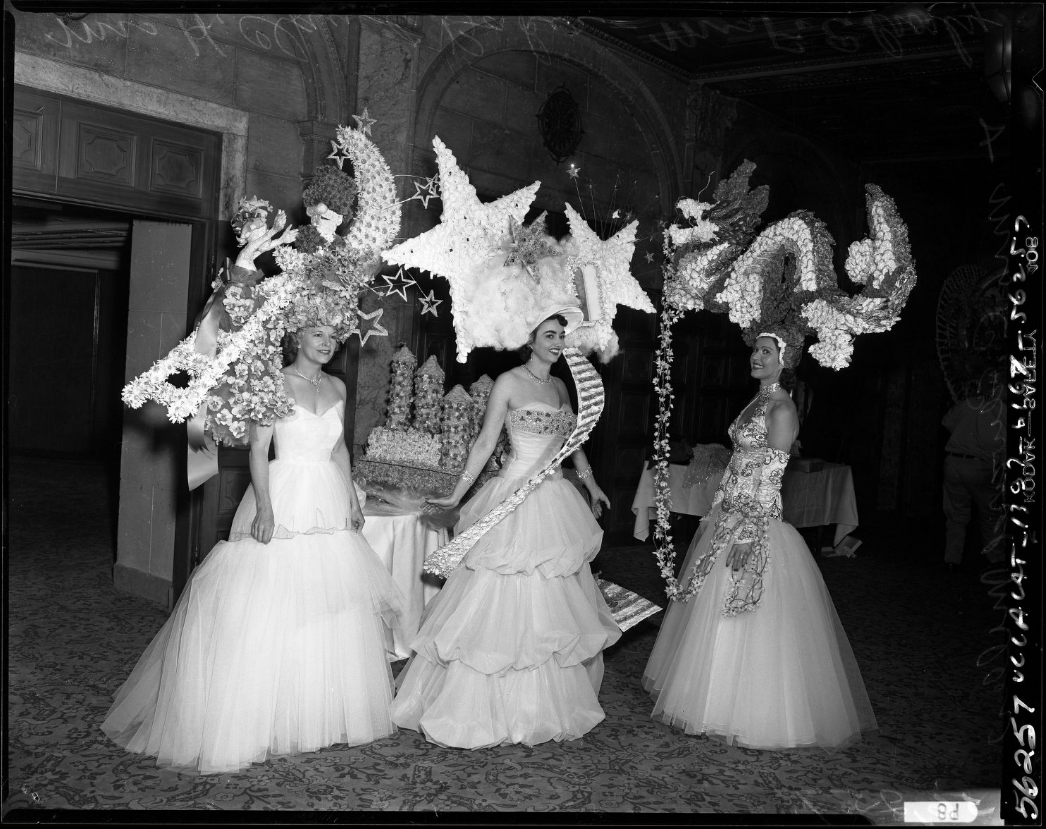
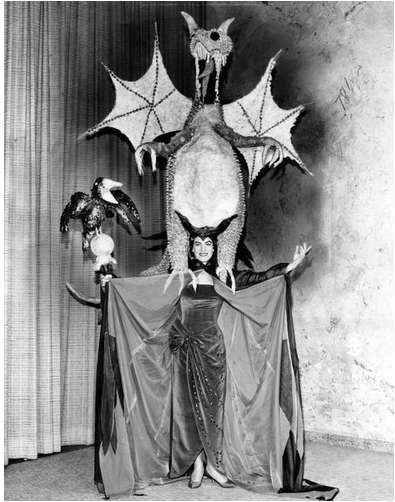
Posted By: Paul - Thu May 05, 2022 -
Comments (2)
Category: Charities and Philanthropy, Fashion, Headgear, Twentieth Century, Twenty-first Century
Bird-Cage Earrings Containing Live Birds
Worn by actress Shary Marshall - Apr 1967. Designed by Lynda Bird Johnson, daughter of President Johnson. The cages contained Australian Snow Finches.
The Orlando Sentinel - Apr 1, 1967
They would pair well with this bird hat that we've previously posted about (worn by actress Jane Bough in 1968).

Posted By: Alex - Wed Feb 23, 2022 -
Comments (3)
Category: Fashion, Headgear, 1960s
Pac-Man Hat
From Stephen Jones Millinery, Spring 2009.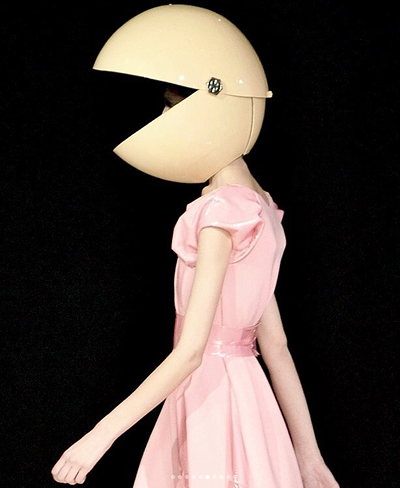
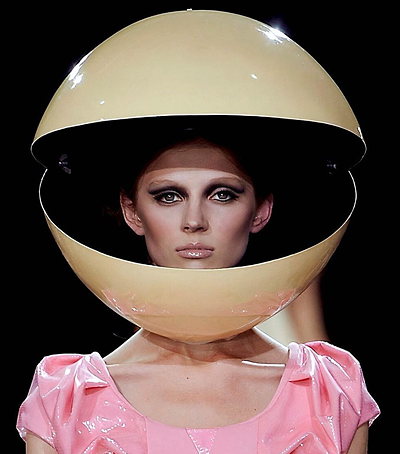
via gastt_fashion
Posted By: Alex - Fri Nov 12, 2021 -
Comments (0)
Category: Headgear, Videogames and Gamers
William Redgrave’s Safety Travelling Cap
The British patent office granted William Redgrave two patents. The first (No. 2888 - 1853) was for a "safety travelling cap". The second (No. 762 - 1859) was for a "pillow travelling cap". However, the two patents seem to describe the same invention. They just emphasize different uses for it.Redgrave's patented cap consisted of three air-tight, circular tubes that would wrap around a wearer's head. His idea was that this would provide a measure of safety for travelers, because if the traveler fell the inflated tubes would cushion his head:
The cap could also serve as a pillow (thus, the second patent):
Finally, Redgrave noted that the cap was "an excellent invention for lunatics." Presumably because lunatics might fall over a lot. Or hit their head against a wall.
Unfortunately Redgrave provided no drawings of his safety cap.
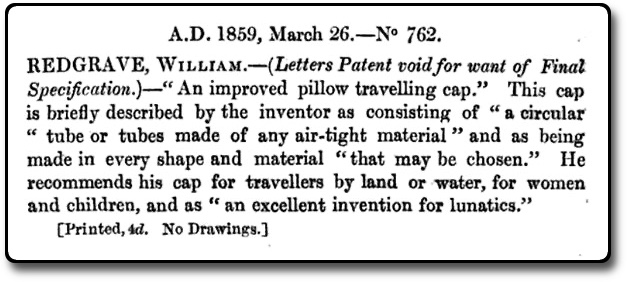
Posted By: Alex - Thu Nov 04, 2021 -
Comments (0)
Category: Inventions, Patents, Headgear, Nineteenth Century
Wham-O’s Sunvu
It protected your face from the sun... just like a hat. While looking more ridiculous.
image source: flashbak.com
Posted By: Alex - Sun Sep 26, 2021 -
Comments (1)
Category: Headgear, 1960s
Combined hat and comb
In 1920, Alva Dawson of Florida was granted a patent for a "combined head covering and hair comb". In his patent he explained:I'm pretty sure it wasn't possible to use this hat-comb without rendering yourself very conspicuous.


Popular Science - Oct 1920
Posted By: Alex - Sun May 02, 2021 -
Comments (0)
Category: Patents, Headgear, 1920s, Hair and Hairstyling

| Who We Are |
|---|
| Alex Boese Alex is the creator and curator of the Museum of Hoaxes. He's also the author of various weird, non-fiction, science-themed books such as Elephants on Acid and Psychedelic Apes. Paul Di Filippo Paul has been paid to put weird ideas into fictional form for over thirty years, in his career as a noted science fiction writer. He has recently begun blogging on many curious topics with three fellow writers at The Inferior 4+1. Contact Us |




